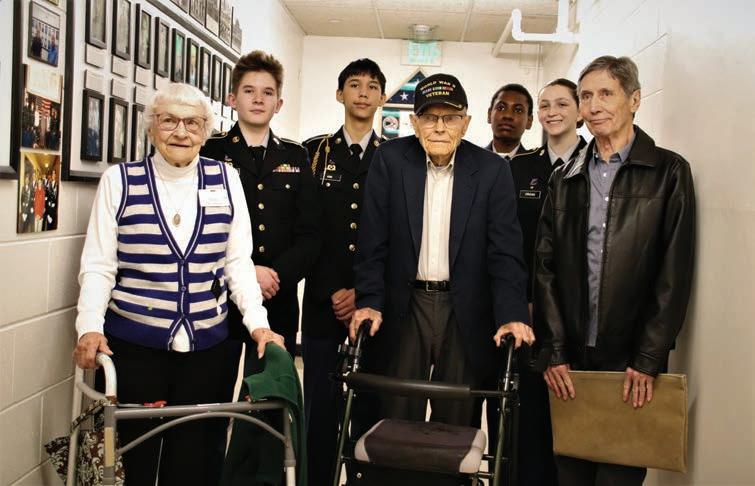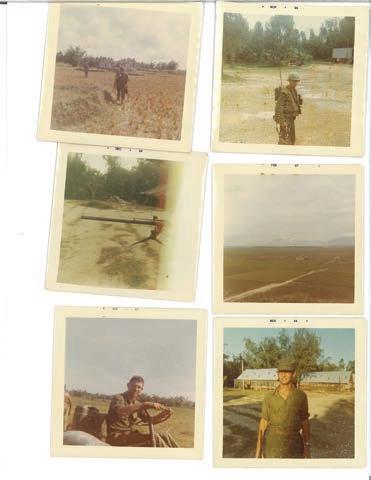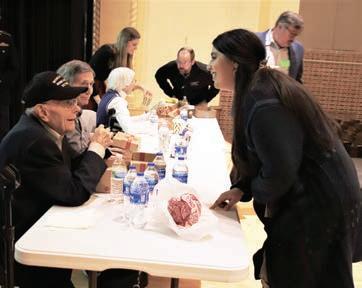
2 minute read
Study sees need for EV chargers
Coloradans are on track to make 25% of new car sales electric
BY MICHAEL BOOTH THE COLORADO SUN
Colorado’s electric vehicle-hungry car buyers are on pace to make EVs 25% of new car sales by 2025, according to a new three-year review by state o cials, but energy leaders must build thousands more charging ports over two years to keep pace.
If Colorado stays on track for 65,000 light-duty EV sales in 2025, governments and utilities need to have installed or at least awarded 1,700 ultrafast DC chargers and 5,800 slower Level 2 public chargers by then, according to the “2023 Electric Vehicle Plan,” the rst since 2020.
Transportation is the leading source of greenhouse gas emissions in Colorado, and one of the largest local sources for ozone-causing emissions that lead to EPA rule violations. Colorado set goals for 26% greenhouse gas reductions from a 2005 baseline by 2025, and 50% by 2030. ose goals have long depended on getting 940,000 EVs on state roads by 2030. U.S. statistics show about 1.6 million light duty cars registered in Colorado. Colorado car sales included 10.5% EVs in 2022, up sharply from 6% in 2021. Coloradans buy about 200,000
SEE CHARGERS, P6
Karry Frame was drafted and served in the Vietnam War when he was 18. He was stationed as a Marine in that country after completing about a year of boot camp and specialized training. He told students that Vietnam was one of the most controversial wars in U.S. history.

“When I got home, there was a lot of animosity nationwide, and especially in L.A. – there were people demonstrating against the war,” Frame said. “It felt like, ‘Are they supporting us or not? We’re just doing what we’re supposed to be doing for our country.’ ere was apprehension about protesters. ere were instances where people in our group were spit on when in uniform.”
Dr. Walter Ordelheide, a South alum, was drafted in 1943. He served in the U.S. Navy during WWII and his job was to care for injured seamen. He was trained at the San Diego Naval Hospital and stationed at the Coco Solo Naval Base Hospital in Panama. After the war, he returned home and started a private practice.
“ ere’s nowhere better than Denver, Colorado,” the 102-year-old Ordelheide said.

Westblade, Frame and Ordelheide are residents of the Clermont Park Life Plan Community in University Hills. ey traveled to South on March 2 to give a Living History Lessons presentation to about 150 ninth and 10th grade history students.

Four Junior Reserve O cers’ Training Corps students served as chaper- ones for the veterans. e event “brings history to life for these students,” said Col. Marvin Meek, who leads South’s Junior Reserve O cers’ Training Corps, or JROTC, program. is is the 11th year that Clermont Park veterans presented to the students, Montera said. He expects the program to continue, though WWII veterans and civilians from that era are dwindling in numbers.



A lot of the residents at Clermont Park are South alumni, said Chuck Montera, Clermont Park community relations representative. e presentation lets students hear from those who helped shape history and experienced tumultuous times.
“It’s super rewarding to be able to o er this opportunity to students,” said Diana Bustamante, a social studies teacher who helps organize the event. “It’s powerful for students to hear from people who are wanting to share their stories. ey learn (history) is not too disconnected from our experiences today.”
Bryn Phinney Webster contributed some of the quotes by Elaine Westblade and Karry Frame that are used in this article. ey were gathered in preparation for the presentations.










